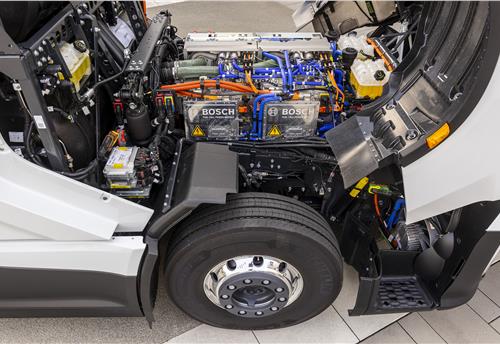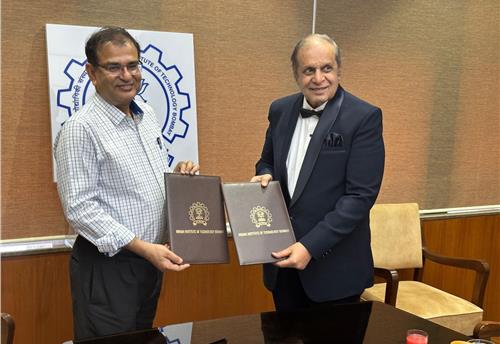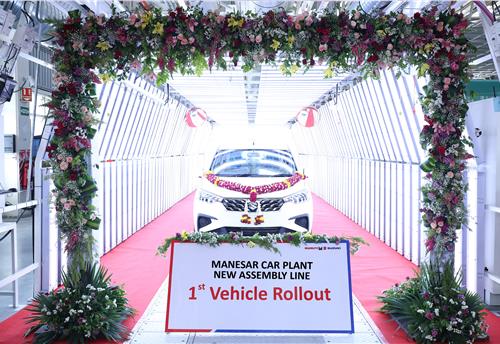E-mobility for all by 2030: Piyush Goyal
In an ambitious move, the government of India is targeting 100% e-mobility by 2030.
The government seems to be keen to put its shoulder to the wheel to drive electric vehicle mobility in India.
With the year 2030 in mind, India could be looking at a scenario where car users could be plugging into an electric vehicle (EV) revolution. As per the plan, EVs will be provided without any upfront payment and will typically be paid for by EV users over a stipulated period of time from the savings made on conventional fuel.
This information was provided by Piyush Goyal, Minister of State (IC) for Power, Coal and New & Renewable Energy, who was speaking at a session on ‘Making India a Global Economic Superpower’ at a conference on Young Indians, organised by the Confederation of Indian Industry (CII) in New Delhi yesterday
Discussing the key role innovation and access to technologies will play in moving towards a developed country, he said, “If we can look at getting best technologies across sectors like has been done in the power sector, and use economies of scale, and incentivise manufacturing this will help India leapfrog inefficient technologies, assets and practices and deploy ones that are more efficient and less emission intensive.”
Commenting on the electric vehicle programme in India, he said that a small working group under road minister Nitin Gadkari has been created. “The working group is evaluating the possibility of India making the transition to 100 percent electric vehicles by 2030. This programme is going to be on a self-financing model and will look at monetising savings that consumers have on petroleum products.”
“We are meeting in the first week of April to see if India can be 100 percent on electric vehicles by 2030.”
According to Goyal, the aim is to make the EV programme fully self-financing, essentially by giving EVs for free as a result of monetizing the savings to be had from not using conventional fossil fuels like diesel and petrol. “We are thinking of scale, of leading the world rather than following the world. India will be the first country in the world to think on such a scale,” he added.
He provided the analogy of the savings derived from the success of one of the key programmes of the Ministry of Power. “The LED programme in India is going to result in savings of 100 billion units of electricity annually and will benefit the consumers directly. In monetary terms it will lead to savings of $6.5 billion annually. Given the environmental concerns, this programme will result in the reduction of about 80 million tonnes of carbon dioxide. This programme demonstrates how economies of scale can be leveraged to achieve a significant reduction in the cost of LED bulbs.”
Goyal said that India has the ability to generate 150 percent of the power that it generates today, given the assets that it has and which are underutilized. The country today is poised to become energy secure. He said, “We are now working on reducing our dependence of oil and gas. Simultaneously we are working on programmes to reduce our consumption. We are looking at increasing consumption which we can blend with petrol. We are now moving to 5 percent ethanol blending with petrol and at the next level this will have a transformational impact on the farmers income.”
Challenges of today: Charging infrastructure, incentivisation, institutional finance
However, as of today, the electric vehicle programme in India faces a number of challenges. In a recent interaction with Autocar Professional, According to Sohinder Gill, director, Corporate Affairs, Society of Manufacturers of Electric Vehicles (SMEV), “EVs have transformed the way people now commute in many cities around the world. In India, we now even have a good policy in the form of ‘National Electric Mobility Mission Plan 2020’ to incentivise adoption of green vehicles. Still, the big-time migration to green transportation has been eluding us. Why?
The answer largely lies in three great inadequacies. One relates to lack of charging infrastructure and the other remains lack of easy access to institutional finance for purchase of EVs. And as migrating to new technology, however good, is never a seamless thing, government and institutions at various levels need to incentivise people to adopt green solutions, and at times they also need to push people a bit.
On the infrastructure front, have you seen any e-vehicle charging station in popular office areas or in residential colonies, despite the fact that it is very easy to set up a charging station? Electric two-wheelers are also very convenient to charge. They can be charged from traditional wall outlets and often have a removable battery, allowing them to be charged indoors. But to charge

they still require charging stations. And these have to be located at convenient points. If the government wants to see the population of e-vehicles growing fast, then it needs to focus its attention in providing infrastructure support for setting up charging stations at multiple points and convenient locations in at least the top 50 cities where there is great potential for large scale migration to EVs.
Unless, a city is well populated with charging stations, people will be reluctant to migrate to electric vehicles. These charging stations can also become an additional employment generator.
Once the proper infrastructure is there, we will witness a dramatic increase in the number of EVs, just like the surge in voluntary migration to CNG happened when Delhi built adequate CNG stations after 1998.
Access to institutional finance for purchase of EVs remains another impediment. Why banks continue to be reluctant to provide easy finance for achieving a much-desired national objective remains a mystery to me. A stiff government advisory to banks to change their attitude when it comes to financing of electric two-wheelers would be highly desirable. In fact, if there is one field where credit should be extended at zero interest rate, this is it.
Also, it would be highly desirable if beyond symbolism, government and institutions become a little more pro-active in adopting e-vehicles themselves. Can they start with converting a part of their fleet to electric and also start offering incentives to employees to migrate to EVs? Authorities at the state level can contribute their bit by directing all eateries, delivery agencies to compulsory use e-vehicles.
Once we start getting used to seeing more and more of e-vehicles on the road, the migration will speed up. We need to ensure fast that more and more of some 20 million two-wheelers that are sold in India every year switch carry the green tag. All that is needed is that the government has to provide the momentum.”
Given Goyal’s statement on the proposed plan to make EVs available for all by 2030, it’s likely the EV programme in the country is set to get an all-new charge.
Stay plugged in for more updates.
RELATED ARTICLES
Bosch hydrogen engine tech-powered truck to be on Indian roads this year
The global supplier of technology and services is betting big on both electromobility and hydrogen. While announcing the...
IIT Bombay inaugurates Arun Firodia Research Floor
IIT Bombay, one of India’s top technical and research institutions, honours Kinetic Group chairman Dr Arun Firodia, one ...
Maruti Suzuki expands capacity at Manesar plant by additional 100,000 units
New assembly line at Plant A expands total manufacturing capacity at the Manesar plants to 900,000 units per annum. Alon...





 By Autocar Pro News Desk
By Autocar Pro News Desk
 26 Mar 2016
26 Mar 2016
 5150 Views
5150 Views









